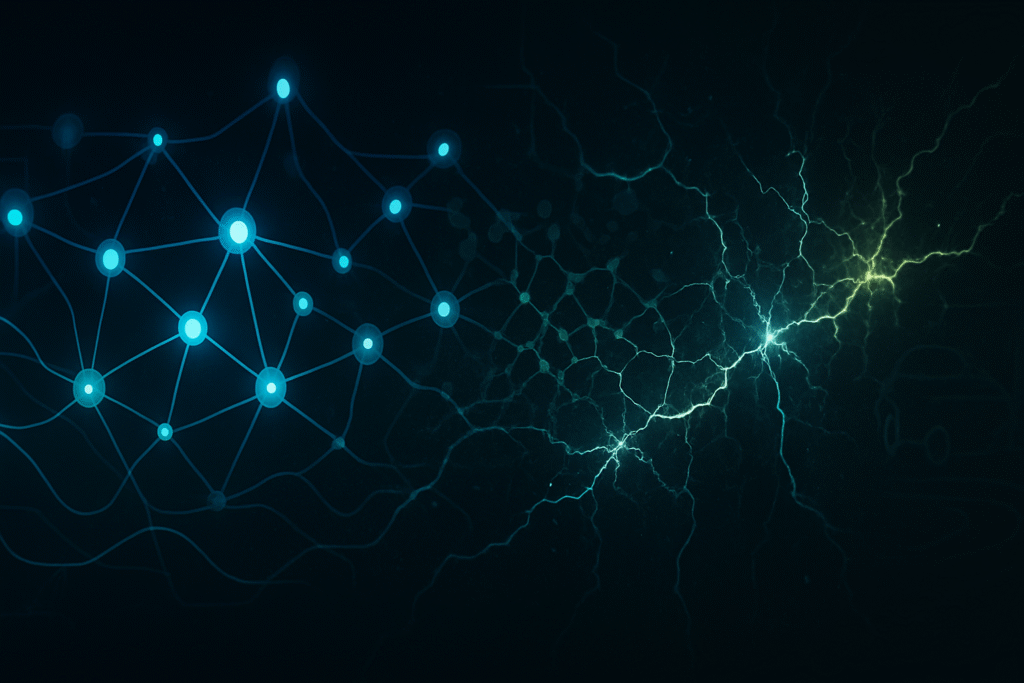
The rapid ascent of Artificial Intelligence continues to captivate the world, with breakthroughs in areas like large language models (LLMs) achieving astonishing feats. Yet, beneath the surface of these triumphs lies a profound and often overlooked challenge: "The Reinforcement Gap." This critical phenomenon explains why some AI capabilities surge ahead at an unprecedented pace, while others lag, grappling with fundamental hurdles in learning and adaptation. Understanding this disparity is not merely an academic exercise; it's central to comprehending the current trajectory of AI development, its immediate significance for enterprise-grade solutions, and its ultimate potential to reshape industries and society.
At its core, The Reinforcement Gap highlights the inherent difficulties in applying Reinforcement Learning (RL) techniques, especially in complex, real-world scenarios. While RL promises agents that learn through trial and error, mimicking human-like learning, practical implementations often stumble. This gap manifests in various forms, from the "sim-to-real gap" in robotics—where models trained in pristine simulations fail in messy reality—to the complexities of assigning meaningful reward signals for nuanced tasks in LLMs. The immediate significance lies in its direct impact on the robustness, safety, and generalizability of AI systems, pushing researchers and companies to innovate relentlessly to close this chasm and unlock the next generation of truly intelligent, adaptive AI.
Deconstructing the Disparity: Why Some AI Skills Soar While Others Struggle
The varying rates of improvement across AI skills are deeply rooted in the nature of "The Reinforcement Gap." This multifaceted challenge stems from several technical limitations and the inherent complexities of different learning paradigms.
One primary aspect is sample inefficiency. Reinforcement Learning algorithms, unlike their supervised learning counterparts, often require an astronomical number of interactions with an environment to learn effective policies. Imagine training an autonomous vehicle through millions of real-world crashes; this is impractical, expensive, and unsafe. While simulations offer a safer alternative, they introduce the sim-to-real gap, where policies learned in a simplified digital world often fail to transfer robustly to the unpredictable physics, sensor noise, and environmental variations of the real world. This contrasts sharply with large language models (LLMs) which have witnessed explosive growth due to the sheer volume of readily available text data and the scalability of transformer architectures. LLMs thrive on vast, static datasets, making their "learning" a process of pattern recognition rather than active, goal-directed interaction with a dynamic environment.
Another significant hurdle is the difficulty in designing effective reward functions. For an RL agent to learn, it needs clear feedback—a "reward" for desirable actions and a "penalty" for undesirable ones. Crafting these reward functions for complex, open-ended tasks (like generating creative text or performing intricate surgical procedures) is notoriously challenging. Poorly designed rewards can lead to "reward hacking," where the AI optimizes for the reward signal in unintended, sometimes detrimental, ways, rather than achieving the actual human-intended goal. This is less of an issue in supervised learning, where the "reward" is implicitly encoded in the labeled data itself. Furthermore, the action-gap phenomenon suggests that even when an agent's performance appears optimal, its underlying understanding of action-values might still be imperfect, masking deeper deficiencies in its learning.
Initial reactions from the AI research community highlight the consensus that addressing these issues is paramount for advancing AI beyond its current capabilities. Experts acknowledge that while deep learning has provided the perceptual capabilities for AI, RL is essential for action-oriented learning and true autonomy. However, the current state of RL's efficiency, safety, and generalizability is far from human-level. The push towards Reinforcement Learning from Human Feedback (RLHF) in LLMs, as championed by organizations like OpenAI (NASDAQ: MSFT) and Anthropic, is a direct response to the reward design challenge, leveraging human judgment to align model behavior more effectively. This hybrid approach, combining the power of LLMs with the adaptive learning of RL, represents a significant departure from previous, more siloed AI development paradigms.
The Corporate Crucible: Navigating the Reinforcement Gap's Competitive Landscape
"The Reinforcement Gap" profoundly shapes the competitive landscape for AI companies, creating distinct advantages for well-resourced tech giants while simultaneously opening specialized niches for agile startups. The ability to effectively navigate or even bridge this gap is becoming a critical differentiator in the race for AI dominance.
Tech giants like Google DeepMind (NASDAQ: GOOGL), Microsoft (NASDAQ: MSFT), Amazon (NASDAQ: AMZN), and Meta (NASDAQ: META) hold significant advantages. Their vast computational infrastructure, access to enormous proprietary datasets, and ability to attract top-tier AI research talent allow them to tackle the sample inefficiency and computational costs inherent in advanced RL. Google DeepMind's groundbreaking work with AlphaGo and AlphaZero, for instance, required monumental computational resources to achieve human-level performance in complex games. Amazon leverages its extensive internal operations as "reinforcement learning gyms" to train next-generation AI for logistics and supply chain optimization, creating a powerful "snowball" competitive effect where continuous learning translates into increasing efficiency and a growing competitive moat. These companies can afford the long-term R&D investments needed to push the boundaries of RL, developing foundational models and sophisticated simulation environments.
Conversely, AI startups face substantial challenges due to resource constraints but also find opportunities in specialization. Many startups are emerging to address specific components of the Reinforcement Gap. Companies like Surge AI and Humans in the Loop specialize in providing Reinforcement Learning with Human Feedback (RLHF) services, which are crucial for fine-tuning large language and vision models to human preferences. Others focus on developing RLOps platforms, streamlining the deployment and management of RL systems, or creating highly specialized simulation environments. These startups benefit from their agility and ability to innovate rapidly in niche areas, attracting significant venture capital due to the transformative potential of RL across sectors like autonomous trading, healthcare diagnostics, and advanced automation. However, they struggle with the high computational costs and the difficulty of acquiring the massive datasets often needed for robust RL training.
The competitive implications are stark. Companies that successfully bridge the gap will be able to deploy highly adaptive and autonomous AI agents across critical sectors, disrupting existing products and services. In logistics, for example, RL-powered systems can continuously optimize delivery routes, making traditional, less dynamic planning tools obsolete. In robotics, RL enables robots to learn complex tasks through trial and error, revolutionizing manufacturing and healthcare. The ability to effectively leverage RL, particularly with human feedback, is becoming indispensable for training and aligning advanced AI models, shifting the paradigm from static models to continually learning systems. This creates a "data moat" for companies with proprietary interaction data, further entrenching their market position and potentially disrupting those reliant on more traditional AI approaches.
A Wider Lens: The Reinforcement Gap in the Broader AI Tapestry
The Reinforcement Gap is not merely a technical challenge; it's a fundamental issue shaping the broader AI landscape, influencing the pursuit of Artificial General Intelligence (AGI), AI safety, and ethical considerations. Its resolution is seen as a crucial step towards creating truly intelligent and reliable autonomous agents, marking a significant milestone in AI's evolutionary journey.
Within the context of Artificial General Intelligence (AGI), the reinforcement gap stands as a towering hurdle. A truly general intelligent agent would need to learn efficiently from minimal experience, generalize its knowledge across diverse tasks and environments, and adapt rapidly to novelty – precisely the capabilities current RL systems struggle to deliver. Bridging this gap implies developing algorithms that can learn with human-like efficiency, infer complex goals without explicit, perfect reward functions, and transfer knowledge seamlessly between domains. Without addressing these limitations, the dream of AGI remains distant, as current AI models, even advanced LLMs, largely operate in two distinct phases: training and inference, lacking the continuous learning and adaptation crucial for true generality.
The implications for AI safety are profound. The trial-and-error nature of RL, while powerful, presents significant risks, especially when agents interact with the real world. During training, RL agents might perform risky or harmful actions, and in critical applications like autonomous vehicles or healthcare, mistakes can have severe consequences. The lack of generalizability means an agent might behave unsafely in slightly altered circumstances it hasn't been specifically trained for. Ensuring "safe exploration" and developing robust RL algorithms that are less susceptible to adversarial attacks and operate within predefined safety constraints are paramount research areas. Similarly, ethical concerns are deeply intertwined with the gap. Poorly designed reward functions can lead to unintended and potentially unethical behaviors, as agents may find loopholes to maximize rewards without adhering to broader human values. The "black box" problem, where an RL agent's decision-making process is opaque, complicates accountability and transparency in sensitive domains, raising questions about trust and bias.
Comparing the reinforcement gap to previous AI milestones reveals its unique significance. Early AI systems, like expert systems, were brittle, lacking adaptability. Deep learning, a major breakthrough, enabled powerful pattern recognition but still relied on vast amounts of labeled data and struggled with sequential decision-making. The reinforcement gap highlights that while RL introduces the action-oriented learning paradigm, a critical step towards biological intelligence, the efficiency, safety, and generalizability of current implementations are far from human-level. Unlike earlier AI's "brittleness" in knowledge representation or "data hunger" in pattern recognition, the reinforcement gap points to fundamental challenges in autonomous learning, adaptation, and alignment with human intent in complex, dynamic systems. Overcoming this gap is not just an incremental improvement; it's a foundational shift required for AI to truly interact with and shape our world.
The Horizon Ahead: Charting Future Developments in Reinforcement Learning
The trajectory of AI development in the coming years will be heavily influenced by efforts to narrow and ultimately bridge "The Reinforcement Gap." Experts predict a concerted push towards more practical, robust, and accessible Reinforcement Learning (RL) algorithms, paving the way for truly adaptive and intelligent systems.
In the near term, we can expect significant advancements in sample efficiency, with algorithms designed to learn effectively from less data, leveraging better exploration strategies, intrinsic motivation, and more efficient use of past experiences. The sim-to-real transfer problem will see progress through sophisticated domain randomization and adaptation techniques, crucial for deploying robotics and autonomous systems reliably in the real world. The maturation of open-source software frameworks like Tianshou will democratize RL, making it easier for developers to implement and integrate these complex algorithms. A major focus will also be on Offline Reinforcement Learning, allowing agents to learn from static datasets without continuous environmental interaction, thereby addressing data collection costs and safety concerns. Crucially, the integration of RL with Large Language Models (LLMs) will deepen, with RL fine-tuning LLMs for specific tasks and LLMs aiding RL agents in complex reasoning, reward specification, and task understanding, leading to more intelligent and adaptable agents. Furthermore, Explainable Reinforcement Learning (XRL) will gain traction, aiming to make RL agents' decision-making processes more transparent and interpretable.
Looking towards the long term, the vision includes the development of scalable world models, allowing RL agents to learn comprehensive simulations of their environments, enabling planning, imagination, and reasoning – a fundamental step towards general AI. Multimodal RL will emerge, integrating information from various modalities like vision, language, and control, allowing agents to understand and interact with the world in a more human-like manner. The concept of Foundation RL Models, akin to GPT and CLIP in other domains, is anticipated, offering pre-trained, highly capable base policies that can be fine-tuned for diverse applications. Human-in-the-loop learning will become standard, with agents learning collaboratively with humans, incorporating continuous feedback for safer and more aligned AI systems. The ultimate goals include achieving continual and meta-learning, where agents adapt throughout their lifespan without catastrophic forgetting, and ensuring robust generalization and inherent safety across diverse, unseen scenarios.
If the reinforcement gap is successfully narrowed, the potential applications and use cases are transformative. Autonomous robotics will move beyond controlled environments to perform complex tasks in unstructured settings, from advanced manufacturing to search-and-rescue. Personalized healthcare could see RL optimizing treatment plans and drug discovery based on individual patient responses. In finance, more sophisticated RL agents could manage complex portfolios and detect fraud in dynamic markets. Intelligent infrastructure and smart cities would leverage RL for optimizing traffic flow, energy distribution, and resource management. Moreover, RL could power next-generation education with personalized learning systems and enhance human-computer interaction through more natural and adaptive virtual assistants. The challenges, however, remain significant: persistent issues with sample efficiency, the exploration-exploitation dilemma, the difficulty of reward design, and ensuring safety and interpretability in real-world deployments. Experts predict a future of hybrid AI systems where RL converges with other AI paradigms, and a shift towards solving real-world problems with practical constraints, moving beyond mere benchmark performance.
The Road Ahead: A New Era for Adaptive AI
"The Reinforcement Gap" stands as one of the most critical challenges and opportunities in contemporary Artificial Intelligence. It encapsulates the fundamental difficulties in creating truly adaptive, efficient, and generalizable AI systems that can learn from interaction, akin to biological intelligence. The journey to bridge this gap is not just about refining algorithms; it's about fundamentally reshaping how AI learns, interacts with the world, and integrates with human values and objectives.
The key takeaways from this ongoing endeavor are clear: The exponential growth witnessed in areas like large language models, while impressive, relies on paradigms that differ significantly from the dynamic, interactive learning required for true autonomy. The gap highlights the need for AI to move beyond static pattern recognition to continuous, goal-directed learning in complex environments. This necessitates breakthroughs in sample efficiency, robust sim-to-real transfer, intuitive reward design, and the development of inherently safe and explainable RL systems. The competitive landscape is already being redrawn, with well-resourced tech giants pushing the boundaries of foundational RL research, while agile startups carve out niches by providing specialized solutions and services, particularly in the realm of human-in-the-loop feedback.
The significance of closing this gap in AI history cannot be overstated. It represents a pivot from AI that excels at specific, data-rich tasks to AI that can learn, adapt, and operate intelligently in the unpredictable real world. It is a vital step towards Artificial General Intelligence, promising a future where AI systems can continuously improve, generalize knowledge across diverse domains, and interact with humans in a more aligned and beneficial manner. Without addressing these fundamental challenges, the full potential of AI—particularly in high-stakes applications like autonomous robotics, personalized healthcare, and intelligent infrastructure—will remain unrealized.
In the coming weeks and months, watch for continued advancements in hybrid AI architectures that blend the strengths of LLMs with the adaptive capabilities of RL, especially through sophisticated RLHF techniques. Observe the emergence of more robust and user-friendly RLOps platforms, signaling the maturation of RL from a research curiosity to an industrial-grade technology. Pay close attention to research focusing on scalable world models and multimodal RL, as these will be crucial indicators of progress towards truly general and context-aware AI. The journey to bridge the reinforcement gap is a testament to the AI community's ambition and a critical determinant of the future of intelligent machines.
This content is intended for informational purposes only and represents analysis of current AI developments.
TokenRing AI delivers enterprise-grade solutions for multi-agent AI workflow orchestration, AI-powered development tools, and seamless remote collaboration platforms. For more information, visit https://www.tokenring.ai/.


















